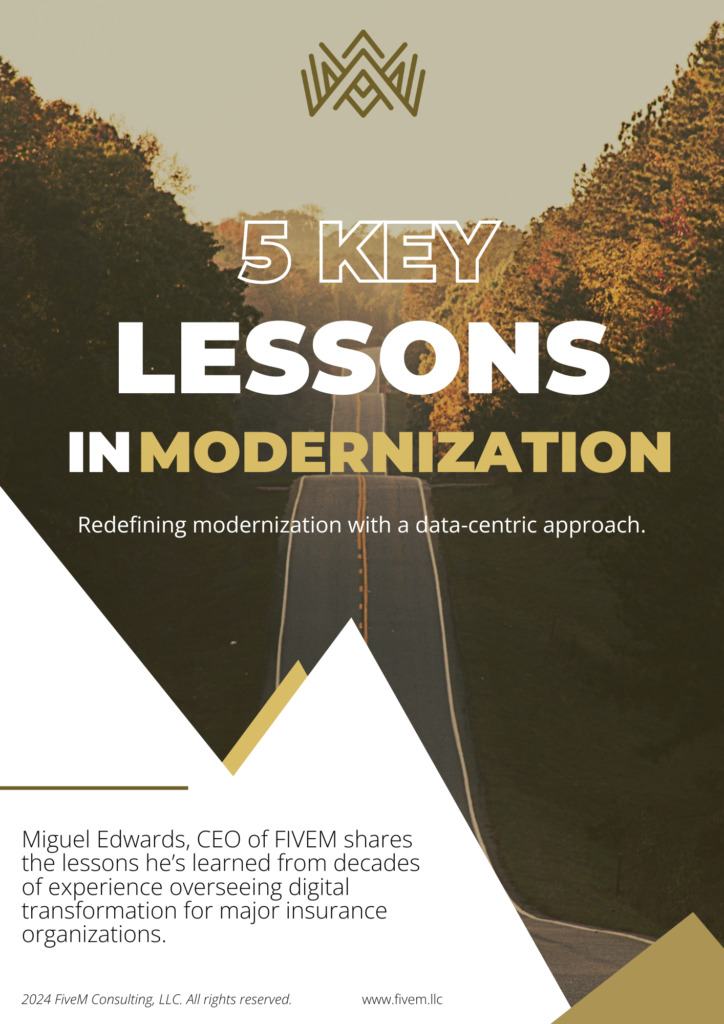AI is no longer a futuristic experiment in the insurance industry, it’s now a business essential. From underwriting and claims handling to fraud prevention, customer support, and regulatory compliance, artificial intelligence has become deeply embedded in daily operations.
As its footprint grows, so does the urgency to govern it responsibly. It’s no longer about asking whether to use AI. The real question is, how do you manage AI in a way that builds trust, satisfies regulators, and supports innovation instead of stifling it?
This playbook is your go-to resource for doing exactly that. It lays out a strategic and realistic approach to AI governance designed specifically for the insurance landscape.
Accountability Is Yours—No Matter Who Built the Model
Whether your AI systems are homegrown or vendor-supplied, you carry the responsibility. Regulators today are no longer content with vague principles, they expect full transparency, traceability, and oversight throughout the AI lifecycle. That means you must know how the model was developed, validated, deployed, monitored, and eventually retired.
Handing this off to a third-party vendor won’t shield you from scrutiny. Contracts need to include provisions that give you the right to audit systems, and you must be notified promptly of any changes in the model’s behavior or structure. If a regulator demands clarity on a decision made by your AI, you’ll need to have well-organized, accessible documentation ready to go.
This level of preparedness is no longer a bonus, it’s the new standard.
AI Governance Isn’t Just for Tech Teams
Too many insurers still view AI oversight as a problem for IT or data science. But that mindset creates risk. AI now influences pricing, claims decisions, customer experience, and fraud detection. It affects operational efficiency, compliance exposure, and even public trust. That makes it a business risk, not a technical one.
The smartest move you can make is to treat AI as part of your enterprise risk management framework. This allows you to align AI initiatives with broader business goals, risk appetite, and operational priorities. Governance then becomes a way to enable smarter decision-making, not slow it down.
Start by applying governance practices to one high-impact AI use case. This allows you to fine-tune controls, identify friction points, and build a scalable framework you can roll out across the organization.
Navigating a Growing and Fragmented Regulatory Landscape
If you’ve operated in multiple states, you’re already familiar with the patchwork of insurance regulation. Now, AI is adding another layer of complexity. Some states are implementing AI-specific legislation, while international regulations like the EU AI Act are setting new expectations that influence the global playing field.
Trying to address every new rule reactively is a recipe for burnout. Instead, develop a flexible governance framework that serves as your foundation. This framework should be robust enough to meet today’s demands but adaptable enough to shift with emerging regulations.
The goal isn’t to chase every law as it lands, it’s to build consistent, long-term practices that can pivot when necessary. This consistency will allow your teams to move with confidence and your organization to remain resilient no matter how the regulatory winds shift.
Explainability Is the New Minimum Standard
“Just trust the algorithm” is a phrase that should be left in the past. Today, you must be able to explain how your AI systems work, why they were built, and what they’re doing.
This means documenting what data is being used, what assumptions the model is based on, how it was validated, and how its performance is being monitored. It also means tailoring your explanation based on who’s asking. Boards want to understand how it ties into business outcomes. Regulators are interested in fairness, bias, and transparency. Your technical teams need detailed documentation that allows for reproducibility.
Often, simpler models can provide the same value as complex ones with less governance friction. Complexity should be intentional, not automatic. If a model can’t be explained, it shouldn’t be used in decisions that carry high business risk.
AI Governance & Compliance Belongs in the Boardroom
AI is no longer confined to the IT department or innovation lab. It’s a central driver of business performance. It influences underwriting accuracy, claims efficiency, customer satisfaction, and even your brand’s reputation. That means AI governance needs to be part of board-level discussions.
When you bring AI to the boardroom, focus on what it enables. Is it improving loss ratios? Speeding up claims? Enhancing customer loyalty? Reducing risk exposure? Boards also want to know that governance structures are strong and scalable. Can your oversight processes adapt to future regulations, tech changes, or shifts in consumer expectations?
The more you position AI governance as a source of competitive advantage not just a compliance requirement, the more support you’ll gain from leadership.
Strong Governance Enables Innovation—It Doesn’t Block It
Let’s bust a myth: governance doesn’t slow innovation. In fact, good governance fuels it. When oversight is baked into your corporate strategy and risk management practices, your teams have the clarity and confidence to experiment, iterate, and scale AI initiatives quickly and safely.
Instead of second-guessing whether they’re in compliance, teams can move forward with confidence. That means fewer delays, fewer compliance missteps, and more momentum.
In short, governance removes roadblocks before they become disasters. It clears the path so your business can move faster without tripping up on legal or ethical landmines.
So, What’s Your Next Move?
As an insurance executive, you’re operating in a high-pressure environment with fast-moving AI capabilities, increasingly vocal regulators, and a customer base that demands both performance and trust. You need a strategy that balances innovation with responsibility.
This means putting the right policies in place for all models, internal and external. It means aligning AI oversight with enterprise risk and operational goals. And it means equipping your teams with the tools and knowledge to explain, audit, and defend every AI-driven decision.
AI governance isn’t a nice-to-have anymore. It’s a critical part of your leadership playbook. When done right, it enhances trust, unlocks innovation, and future-proofs your business in a world that’s only going to get more complex.
These perspectives draw on the experience of leading experts in compliance, enterprise risk management, and AI oversight in the insurance sector, shared during a recent executive webinar hosted by FiveM on the evolving role of AI in the industry.
A heartfelt thank you to Ron C. Hamilton, Anthony Habayeb, and Carol Williams for sharing their invaluable perspectives and helping shape this evolving conversation. Their deep knowledge and practical experience continue to guide the way forward as we navigate this new era of intelligent insurance.





